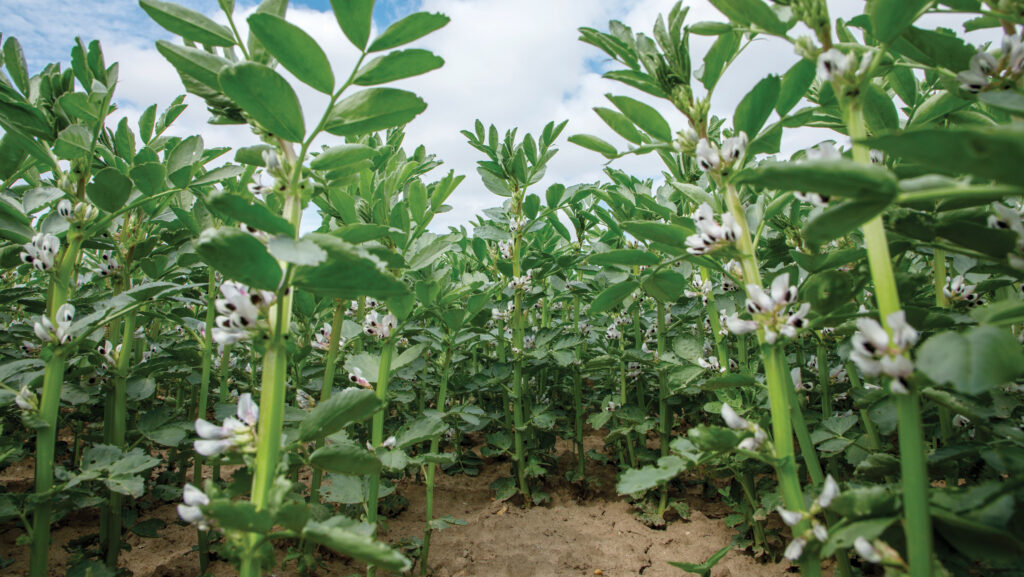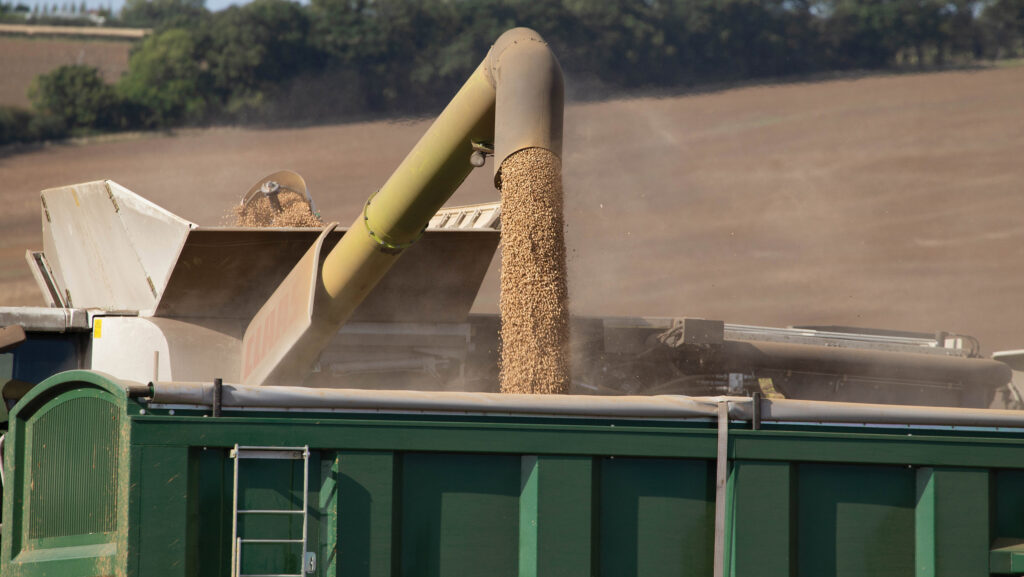Pea and bean markets wait to see quality of harvest 2024
 © GNP
© GNP Predicting the pulse acreage and crop size is always a challenge, with no confirmation of what is in the ground until the results of the annual June census are released, which is usually not until October each year.
However, crop areas are known to be lower, with the bean area down perhaps more than peas on a percentage area basis.
See also: Oat outlook uncertain after tight supply from 2023 crop
Overall, the total pulse area is estimated by the trade to have fallen by between 10% and 25% for harvest 2024, with Sustainable Farming Incentive (SFI) payments and poor weather, usually in combination, accounting for most of that fall.
Crop conditions are generally good, with the cool damp spring and early summer having helped.
Yield prospects overall look likely to be significantly better than for the last few years, says Roger Vickers, chief executive officer of the Processors and Growers Research Organisation (PGRO).
Market drivers – beans
Trade views for the UK bean crop range anywhere from just over 400,000t to more than 550,000t.
Prospects of a smaller crop led to some firm bids about two months ago and, while prices have eased back slightly, there is forward demand for feed beans through the winter.
Midweek, this puts feed beans at about £240/t to £245/t for harvest movement, a level which Charles Newton, junior commodity trader at United Oilseeds, says is worth a look.
This is on the basis that there is likely to be a fair amount of competition on bean export markets, which from a UK perspective are currently quiet.

© Tim Scrivener
“If we look at the area planted across Europe, the Baltics and Australia, which have all risen slightly, they are going to provide quite a bit of competition,” says Charles.
“Feed values at these levels pretty much outweigh the risk and value of trying to attain human consumption premiums.
“There are buyers out there and I would strongly consider these levels, as I wouldn’t be surprised if feed bean values fall.”
Prices further forward offer no more than the cost to carry the crop, he says.
While agreeing that the SFI and the weather are the main causes of the drop in area, he attributes part of the fall to growers having had a couple of tough years with pulses.
Viterra bean trader James Ormerod also considers that with plenty of competing protein sources for feed mills, bean values could falter.
“Beans are expensive for feed mills, they have plenty of alternatives like rapemeal, and dried distillers grains are very cheap at the moment.
“It’s the same for the feed mills across Europe, so I would think the bean price would have to soften, but we thought that this time last year and it didn’t happen.”
Combining peas
Peas account for about 20% of the pulse acreage and free market activity is very low.
An estimated two-thirds of the area is contracted, with some keen offers having been put out and taken up at harvest last year for the 2024 crop.
As with most quality commodities, most of the open market activity will not take place until the market sees what quality is on offer.
Contracts offered around harvest last year for blue peas for harvest 2024 ranged from £300- £400/t ex-farm, yellow at £300-£320/t and marrowfats at £400-£500/t.
Charles expects free market trade to be within this range but at either end, depending on what quality the crop offers.
The yellow pea market has been under pressure from imports at very low values from Eastern Europe.
Maple peas have seen strong demand, clearing stores, with only a small acreage available at the coming harvest, says the PGRO, which expects 2025 crop contracts are likely to top £400/t ex-farm for this type of pea.
End-of-season offers for the small tonnage of marrowfats still on farm are in the £500/t region.
Contracts for marrowfat pea and green pea production for crop 2025 are out, but there are no fixed prices available yet for yellow or maple peas, says the organisation.
Pulse market growth – feed and food
Peas and beans compete with imported soya meal for feed uses, but both price and GM issues means that feed compounders are starting to look to pulses as an alternative home-grown and sustainable source of protein, says the PGRO.
Home-grown pulses also score well on the sustainability front compared with the growing costs and climate consequences of imported alternatives.
Pulses play an important role in human nutrition both as foods and as food ingredients, bringing the nutritional benefits of high levels of dietary fibre and complex carbohydrates.
In addition, pulses offer environmental and sustainability benefits for food manufacturers which is of growing importance.
The nutritional value and functions of pulses – their fibre, starch and protein types – make pulses suitable for a wide and growing range of food products.
They have a low glycemic index and are gluten-free.
Pea and bean types and uses
Peas
Marrowfat peas
- For canning, packet sales and processing.
- UK green peas (blues) are used as the base product for most canned mushy peas.
- In Europe, they are used for soups and canning.
- Export markets include high-quality samples to the Far East for snack products.
- The micronising market also looks for good quality green peas with less than 10% waste and stain.
Yellow/white peas
- These go mainly to animal feed markets and to limited human-consumption markets.
- Yellow peas are a small sector of the UK pulse market, used for stews, soups, and also in pease pudding.
- Provided the UK is competitive, its yellow pea surplus will usually be exported to India.
- Feed peas have replaced soya in some feeds.
Maple peas
- Used in some regional recipes and preferred for some feed markets, but offer low yields and low premiums, so are a small proportion of the UK crop.
- A small tonnage of maple peas is exported to Asia for the snack market.
Beans
Spring faba (fava) beans
- These are mainly exported to the Middle Eastern and North African countries for traditional dishes.
- Skins must be thin, pale and smooth for this market, which requires uniform size and minimal or no beetle damage.
- Maximum moisture content requirement is typically 15%, maximum beetle damage of 3% (visible and non-visible).
- Feed markets favour LVC (low vicine and convicine) types, which refer to varieties that are low in these anti-nutritional compounds and better for animals, particularly pigs and poultry.
Winter faba (fava) beans
- These are mainly grown for domestic feed and some export markets.
- Better samples command a premium for the human consumption trade to Egypt, where they are used for splitting.
Feed beans
- Some micronising takes place for sheep feed, but most feed beans are dehulled or split – removing the fibrous hull to leave the high protein bean.
- Fish feed has become an important market for feed beans, especially for farmed salmon.
Combining pea and bean areas (ha) |
||||
|
|
2021 |
2022 |
2023 |
Change 2022-23 |
|
Field beans |
184,810 |
208,154 |
210,603 |
1.2% |
|
Combining peas |
60,390 |
56,586 |
60,251 |
6.5% |
|
Confidence interval for beans was + or – 5% for beans and for peas was + or – 15%. Source: Defra |
||||
